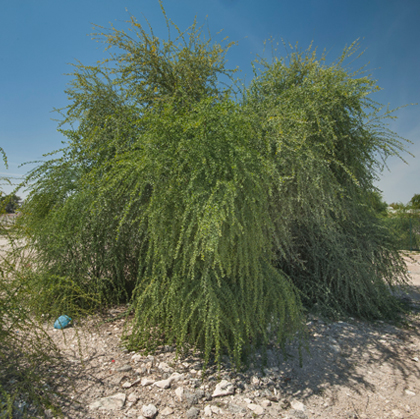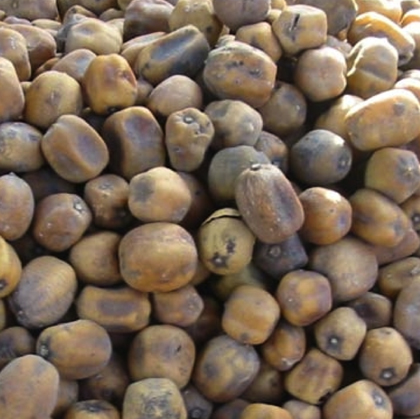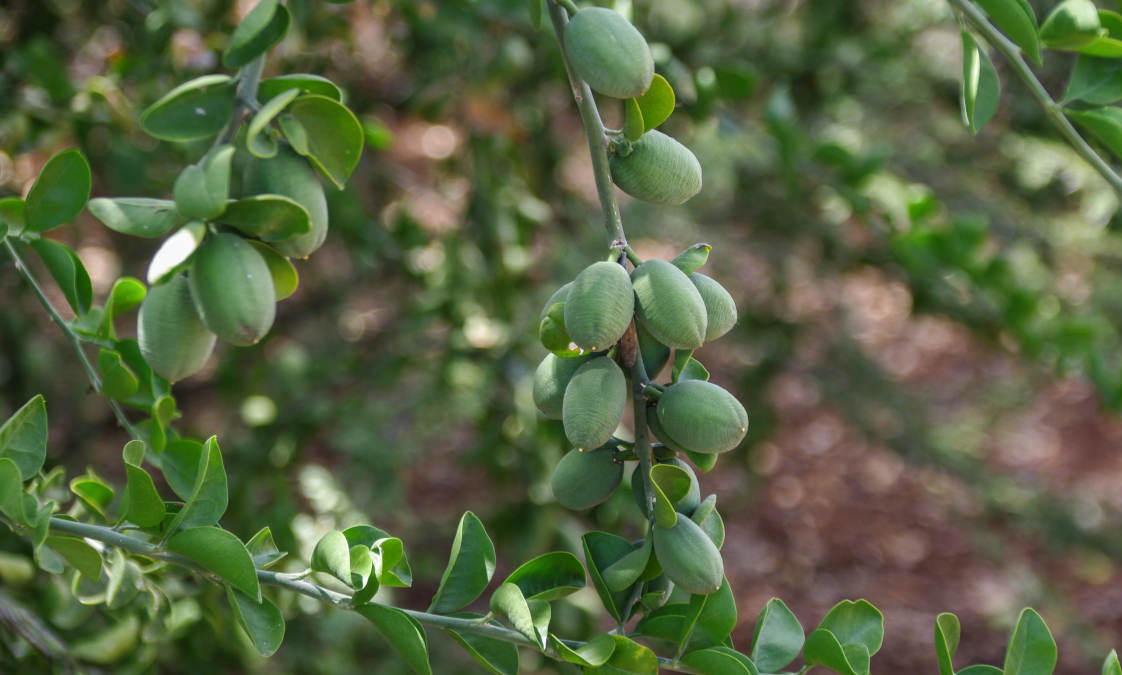The fruit is considered a natural laxative for the stomach, as well as as a repellent for worms and treats indigestion. Lapis oil is used in the cosmetics industry and is also used in the treatment of rheumatism, as well as some diseases that affect the reproductive system, sex hormones, infertility and fertility diseases. The ancient Indians were also known to use it to treat some skin diseases such as vitiligo. The fruits are also useful in treating cough and yellow fever.
Balanites aegyptiaca

Plant (B. aegyptiaca)

Fruits (B. aegyptiaca)
Balanites aegyptiaca
Balanitaceae
(English): Desert date, Soapberry; (Arabic): Hegleeg, Laloub;
(Synonyms): Ximenia aegyptiaca
It is native to much of Africa and parts of the Middle East. Found grown in lowland plains
The fruit/seed/bark
Physical Description Spinescent savanna trees up to 7m high, with dark brown, longitudinally fissured bark and green. Straight, supra-axillary, up to 8cm spines. Leaves alternate, compound, bifoliate, leaflets rhomboid to obovate apex. Inflorescences supra-axillary clusters, up to 2cm long, pedicels up 1cm long. Flowers yellow green with fleshy disk and covered with white hairs. Fruits drupe, oblong-elliptic up to5 mm long, with wrinkled, yellow epicarp and hard, pointed, woody endocarp.
Six flavonoid glycosides: quercetin 3-glucoside, quercetin-3-rutinoside; 3-glucoside, 3-rutinoside, 3-7-diglucoside and 3-rhamnogalactoside of isorhamnetin were extracted and identified from the leaves and branches of Balanites aegyptiaca. Only isorhamnetin: 3-rutinoside and 3-rhamnogalactoside were recorded from the fruits of the same plant.
( https://www.jstor.org/stable/23674385)
The root contains rotenone and yamogenin whereas the stem contains in addition to rotenone, coumarin and bergaptin and diosgenin. The fruits contain the steroids Yamogenin and diosgenin in addition to the flavonoids isorhamnetin-3-rutinoside and 3-rhamnoglactoside.
Macerated fruit mixed with millet to make a porridge given to women, after childbirth and during lactation, to give them energy, strength and to increase milk production. The oil released from the seeds by boiling is used in the treatment of headache and influenza. It is also used after childbirth and during lactation to release stomach colic and facilitate milk production. (2022 Purdue University).
The maceration of the fruits is used against constipation and as anti-diabetic.
Benefits for the Liver:
B. aegyptiaca helps improve and support liver health, as it helps rebuild damaged liver tissue and regenerate hepatocytes. Cirrhosis of the liver, which results from inhalation of toxic chemicals in chemical plants.
Cancer resistance:
It is one of the fruits rich in antioxidants, which is resistant to cancer, as these antioxidants work to prevent the emergence of genetic mutations.
Specification Data Sheet:
This Sudanese standard is formulated by the technical committee No.4 formed according to the administrative decree of the SSM0/1/A/I dated 18/8/01. It applies to Balanites aegyptiaca.
On formulating this standard the committee has referred to international publications and works of Sudanese researchers on the subject.


